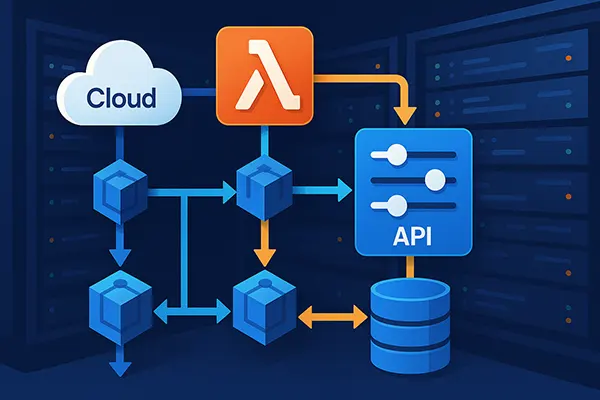10 Innovative AI Features in Windows 12: Insights After Initial Testing

Windows 12 marks a significant step forward in Microsoft’s AI integration journey. The operating system introduces a host of new features designed to enhance productivity, usability and accessibility for users across all levels. After initial hands-on testing in early 2025, several standout tools and improvements demonstrate how deeply AI is now embedded into the Windows ecosystem.
AI-Powered Start Menu and Contextual Recommendations
One of the most apparent innovations in Windows 12 is the overhauled Start Menu, now enhanced with real-time AI suggestions. Rather than simply listing recent or pinned applications, the system analyses usage patterns, calendar events, and even time of day to prioritise what’s likely to be needed next. This predictive approach streamlines navigation and minimises the number of clicks required to complete tasks.
In parallel, contextual recommendations have been integrated across the user interface. Whether composing an email, opening a document, or performing a search, the system suggests relevant actions based on prior activity. This intelligent assistance brings subtle but meaningful gains in daily efficiency.
Users can customise the depth and nature of these recommendations, ensuring a balance between helpful suggestions and personal privacy. Early testers praised the fine control and transparency over how data is used and interpreted.
Improvements in App Launch and Workflow Continuity
AI in Windows 12 doesn’t stop at surface-level enhancements. Application launching is now smarter: the system pre-loads frequently used programs based on habitual timings and context, reducing load times significantly. It’s akin to a predictive cache based on behaviour rather than static preferences.
Moreover, Windows 12 supports seamless workflow continuity. For instance, if a user begins editing a spreadsheet on one device, switching to another device on the same account will prompt an AI-based suggestion to resume work at the exact point it was left off.
This level of cross-device context-awareness has been refined further with the help of the Microsoft Graph, which intelligently maps user activity and intentions across the ecosystem.
Copilot Expansion and Natural Language Control
Windows Copilot, introduced as a system-wide AI assistant, has seen substantial upgrades. Unlike its predecessor in Windows 11, the new version provides deep integration with local system functions, such as settings adjustments, file management, and accessibility tools. It understands complex user queries and executes commands directly.
Natural language control is now more capable and flexible. Instead of memorising specific phrases, users can describe tasks conversationally, like “make my screen easier to read” or “find the document I edited last Thursday”, and receive instant, accurate responses.
Additionally, Copilot now incorporates results from local apps, Outlook, OneDrive and Teams, merging them into coherent, prioritised suggestions. This unified experience eliminates the need for separate manual searches across programs.
Accessibility Features Driven by AI
Windows 12 introduces several accessibility tools powered by AI, tailored for users with various impairments. Voice commands are more responsive and precise, and the Narrator tool now features voice modulation based on content type and user reading speed.
One standout is the real-time captioning tool, which not only transcribes spoken content from any app or video source but also auto-translates into different languages. This is particularly useful in international business settings and inclusive education.
AI also adjusts interface contrast, size, and interaction zones dynamically based on user behaviour, enhancing usability for those with visual or motor difficulties without the need for manual configuration.

AI Security Enhancements and Threat Response
Cybersecurity has become a top priority in modern operating systems, and Windows 12 leverages AI to proactively safeguard devices. The new AI-powered Microsoft Defender analyses behavioural patterns rather than relying solely on known virus signatures, allowing it to detect emerging threats and suspicious activities earlier.
In particular, phishing detection is now real-time and contextual. When a user receives a suspicious email or is about to open a potentially dangerous site, Defender uses AI to assess the intent and delivery method of the content, providing tailored warnings and suggested actions.
This feature is bolstered by integration with Microsoft’s global threat intelligence feed, ensuring Windows 12 stays ahead of evolving attack strategies in 2025’s cybersecurity landscape.
Data Privacy and AI Customisation
With AI integrated so deeply, Windows 12 introduces a new privacy dashboard allowing users to review and control how AI systems use their data. This dashboard provides transparency on what is collected, why, and how it improves system performance.
Users can choose between different levels of AI personalisation—from fully customised suggestions based on individual usage patterns to more generic support. This flexibility is essential in environments where confidentiality and compliance are priorities.
Microsoft also commits to on-device AI processing where possible. This means that tasks like local file indexing, predictive typing, or image analysis are handled without data being sent to external servers, improving both performance and privacy assurance.
Popular topics
-
 High-Performance Networking...
High-Performance Networking...High-performance networking has become a core requirement for modern …
-
 Edge AI and TinyML: How Int...
Edge AI and TinyML: How Int...Edge-level artificial intelligence has become one of the most …
-
 How to Programmatically Bui...
How to Programmatically Bui...Creating a flexible and efficient microservices ecosystem in 2025 …
-
 The Role of Artificial Inte...
The Role of Artificial Inte...Artificial intelligence has become a practical component of gambling …
-
 Virtual and real hosting, w...
Virtual and real hosting, w...Today, many providers offer virtual servers where you can …
